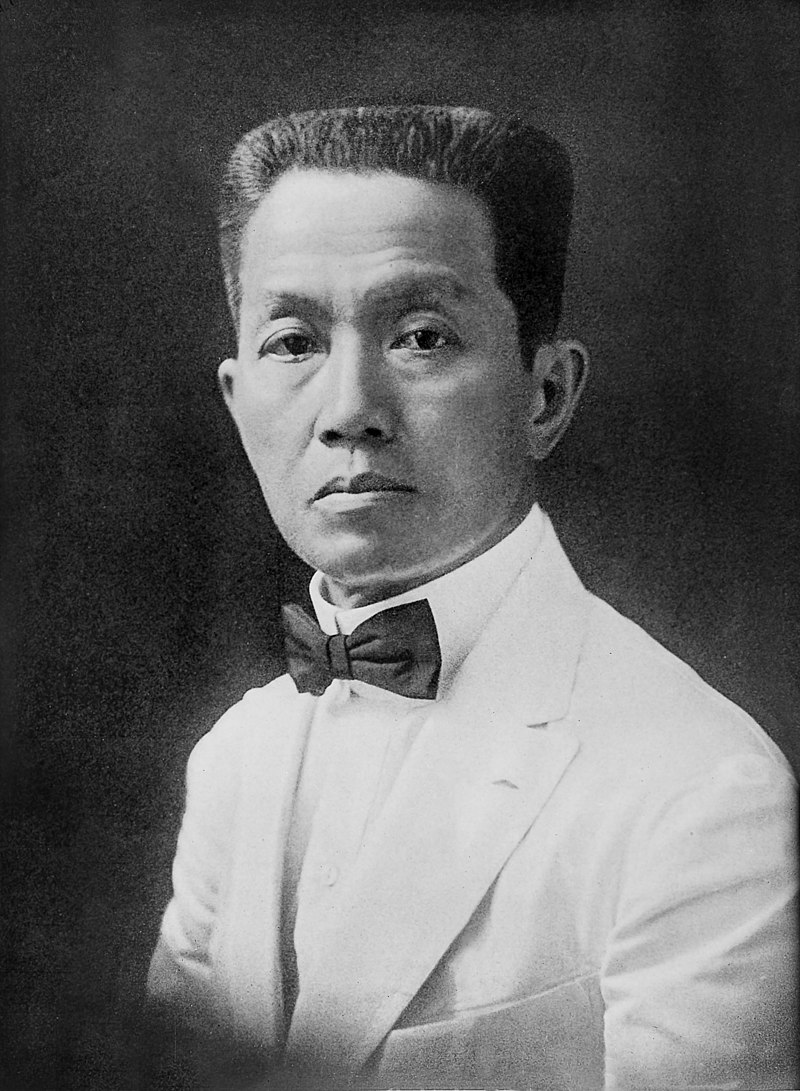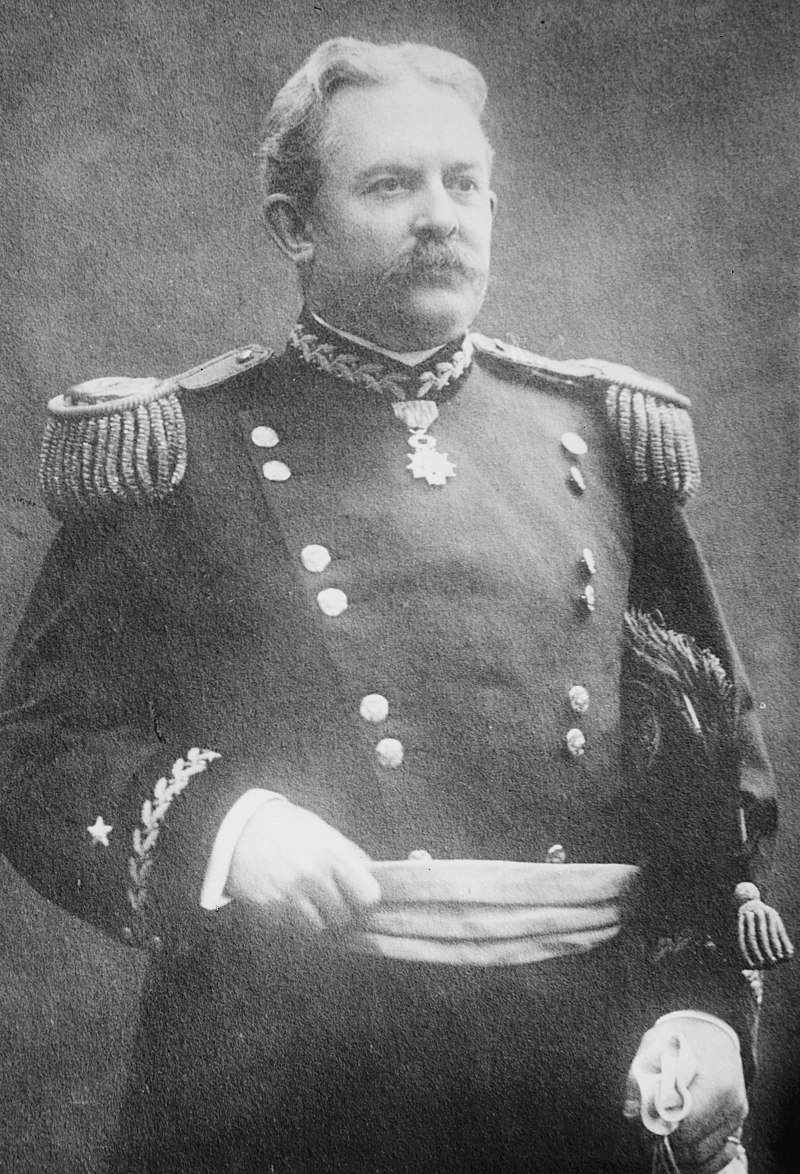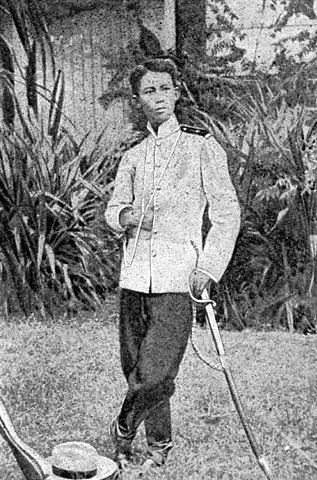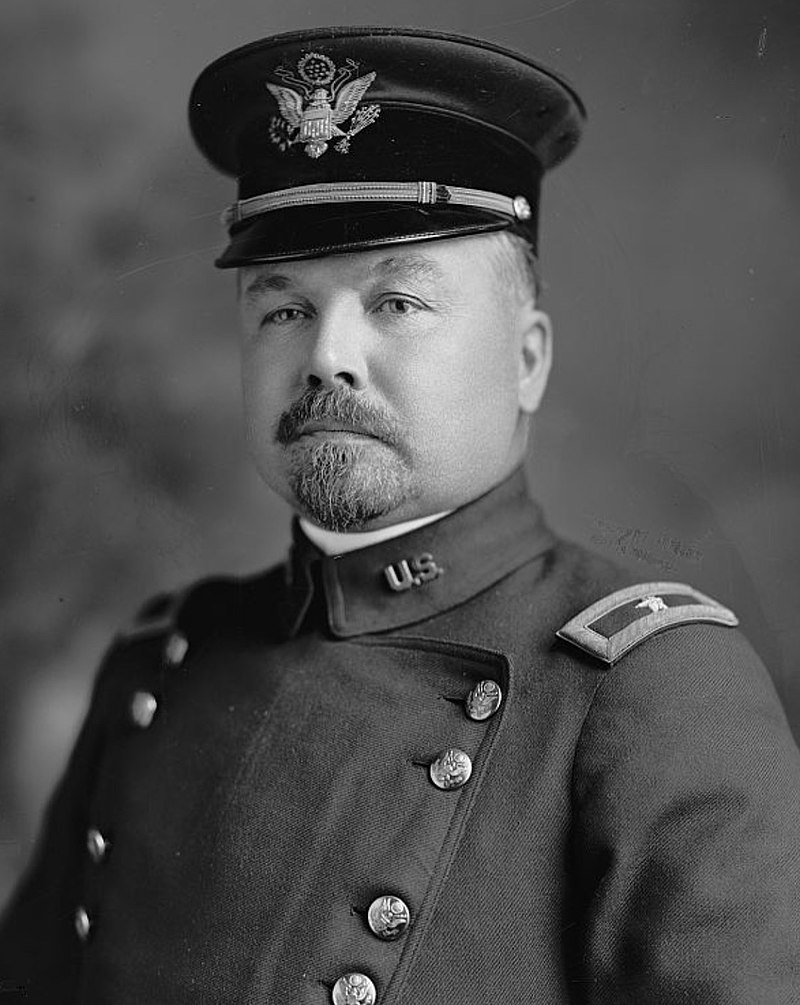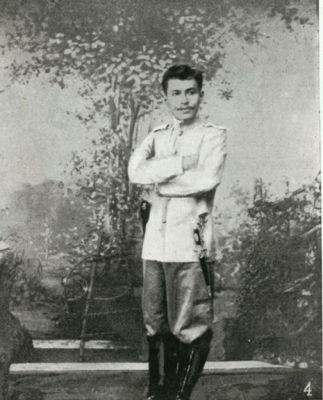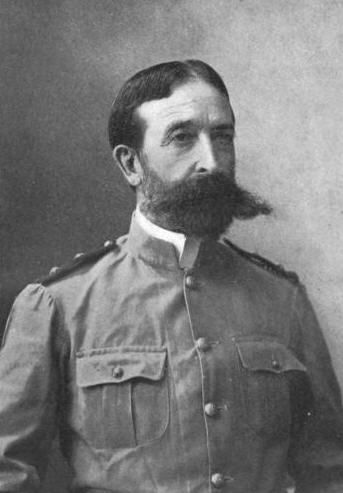Americans Advance To San Fernando, April 22-May 5, 1899
Soon after he captured Malolos on March 31, 1899 (ABOVE), Brig. Gen. Arthur C. MacArthur, Jr., was eager to proceed northward at once along the line of the railroad to Tarlac Province in pursuit of Aguinaldo, who, he felt sure, was making his retreat in that direction. In reply to his request to be allowed to do so, Maj. Gen. Elwell S. Otis said:
“Aguinaldo will never retreat in province of Tarlac. If forced strenuously he will retire along the edge of the province of Bulacan into Nueva Ecija, where Tagalos inhabit. This for political reasons… Was informed several days ago that insurgents would retire on Baliuag, which is the intersection of several important roads connecting with nearly all the Tagalog country north of Manila.”
Indeed, President Emilio Aguinaldo moved his capital to San Isidro, Nueva Ecija Province, 65 miles (104 km) north of Manila.
Believing that a combined movement which should result in the hemming in of the Filipinos would be more advisable than a pursuit, General Otis detained General MacArthur at Malolos, until communications between that town and Manila should be perfected, and until Maj. Gen. Henry W. Lawton could be sent north to protect his eastern flank and aid in surrounding the Filipino forces.
On April 22, after three weeks of cooling off at Malolos, MacArthur was allowed to advance to the north; the objective was San Fernando, Pampanga Province. Wheaton came up on the left, and Hale’s brigade moved along the center. On the same day, Lawton’s division started to sweep the country to the right, with San Isidro, Nueva Ecija Province, as objective. The plan called for MacArthur and Lawton to meet up at San Miguel de Mayumo, Bulacan Province; the combined columns would then proceed to crush the Filipinos at San Isidro. All the forces were retarded by the extreme heat, rains, and bad roads.
Battle of Quingua, April 23, 1899
The first important fighting of MacArthur’s northward movement was at Quingua (now Plaridel), Bulacan Province, on April 23. It was a two-part battle.
The first phase was a brief victory for the young Filipino general Gregorio del Pilar over the American Cavalry led by Major (later Maj. Gen.) James Franklin Bell, West Point class 1878, where Bell’s advance was stopped.
But in the second phase, Bell was reinforced by the 1st Nebraskan Infantry and the Nebraskans routed the Filipinos, but not before they repelled a cavalry charge that killed Colonel John M. Stotsenburg.
The battle began when Bell and his men, while on a scouting mission, were attacked by a strong force of about 700-1,000 Filipinos led by General Gregorio del Pilar.
The Americans were forced to withdraw to a defensive position. Swarms of Filipino troops began to attack from different directions.
Bell saw that he was in a badly exposed position, and if he did not receive help soon his force risked being captured or killed.
Bell sent for reinforcements, and the 1st Nebraskans came to his aid under Colonel Stotsenburg.
Once he entered the field, Stotsenburg ordered a charge, and the Nebraskan Infantry�Stotsenburg at their lead with a dozen or so cavalrymen�rushed the Filipinos’ position. Stotsenberg, taking into account that the Filipinos previously had displayed poor marksmanship, perceived that a charge from such a force would dislodge and route them, which on most occasions, had been done before rather easily.
Instead, the Filipinos held their ground and opened a heavy accurate fire into the charging cavalrymen. Stotsenberg fell, along with 6 of his men.
Several of the cavalrymen’s mounts were also slain. The Filipinos sustained the heavy fire, forcing the cavalry to retreat.
The Nebraskan infantry advanced under withering fire. Soon the two forces clashed in close range combat. After a stiff fight in which both sides suffered heavy casualties, the Filipinos were driven into their secondary defenses.
Brig. Gen. Irving Hale ordered an artillery bombardment on the Filipinos’ secondary defensive lines. Two artillery pieces were brought up, which fired 20 shots into the Filipino positions. The powerful artillery barrage forced the Filipinos to retreat.
Casualties: 15 Americans killed, 43 wounded; 100 Filipinos killed and wounded.
In 1902, a large US military reservation, Fort Stotsenburg, was created in Pampanga Province and named in honor of Colonel Stotsenburg. It was originally set up as a facility for various US Army Cavalry units. In 1919, a US Army air force base, Clark Field, was carved out of Fort Stotsenberg. [The US Air Force became a separate branch of service only in 1947.]
In 1949, the two military facilities were combined and renamed Clark Air Base. It was the largest overseas U.S. military base in the world, with 156,204 acres (63,214 hectares). It played a major role during the Cold War, but was closed following extensive damage from the Mt. Pinatubo eruption on June 15, 1991. On November 27, 1991, the United States turned over Clark Air Base to the Philippine government.
Men of Company D, 3rd US Infantry Regiment, at captured Filipino breastworks that commanded the main entrance to Quingua (now Plaridel), Bulacan Province
Guardhouse of the 3rd U.S. Infantry Regiment at Quingua (now Plaridel), Bulacan Province
Battle of Calumpit, April 25-27, 1899
Brig. Gen. Arthur C. MacArthur, Jr. pushed 5 miles (8 km) farther north of Malolos to Calumpit, where he faced the forces of Gen. Antonio Luna—commander-in-chief of all Filipino forces—and Gen. Gregorio del Pilar.
April 24, 1899: Thirty-eight Filipinos were found dead in this trench near Pulilan, Bulacan Province
Luna ignored Aguinaldo’s orders to retreat and burn the railway bridge spanning the Bagbag River at Calumpit. Worst, when the Americans were about to attack, Luna, together with his foot soldiers, cavalry, and artillery left Calumpit to punish General Tomas Mascardo for his insubordination. Mascardo was then in Guagua, Pampanga Province and dillydallied in obeying Luna’s order to send reinforcements. Mediators managed to avert a violent confrontation between the two generals.
Bagbag River railway bridge thrown down by Gen. Gregorio del Pilar. The US Army engineers corps built steps for the troops to cross and assault the Filipinos beyond.
During April 23-24, General del Pilar was left to fight the Americans; he threw down a section of the railway bridge. He actually planned to wreck the American artillery transport train; his men cut the girders of the iron bridge, intending to have the structure fall with the train, but it collapsed prematurely of its own weight. The US troops advanced to the edge of the river, a hundred yards beyond which the Filipinos were entrrenched.
The 20th Kansas Volunteers were on the right side of the road and the Utah Volunteer Light Artillery and the 1st Montana Volunteers on the left. In the center was an armored train mounted with six pounders and rapid fire guns.
The train was pushed by Chinese porters to the mouth of the bridge and a vigorous response was made to the fire of the Filipinos. Col. Frederick Funston, along with 6 men, crawled across the ironwork of the bridge under heavy fire. When they reached the broken span, they dropped into the water and swam ashore.
On April 27, 1899, Col. Frederick Funston directed his men across the other river in Calumpit, the 400-foot wide (122 m) Rio Grande de Pampanga, by establishing a rope ferry and towing rafts on the tied ropes. The bridge had been stripped by the Filipinos and the river was too deep to ford. With 120 Kansas men, Funston went to a point several hundred yards from the bridge where 2 privates swam with a rope to the opposite shore where they attached the ropes to a portion of the Filipino trench, under vigorous covering fire. The rope was then attached to 3 rafts loaded with 50 men and drawn to shore under heavy fire. Funston was on the first raft to cross the river to confront the Filipinos on the other side.
The Americans attacked the left flank of the Filipinos who scuttled into covered ways and trenches. The rest of the Kansans and Montanans crossed the bridge in single file along the stringers. All the woodwork and much of the iron work had been removed. The 1st Nebraska Volunteers, acting as reserves,.attacked the Filipinos in three lines of entrenchments, driving them out.
The New York Times reported:
“In the meantime, a large body of Filipinos, estimated at no fewer than 3,000, led by Gen. Antonio Luna on a black charger, appeared in the open field about two miles to the left, evidently coming to reinforce the rebels who were engaged with the Nebraskans. Emerging from the jungle, the enemy formed an open skirmish line, nearly two miles in length, with very thick reserves behind. They then advanced at double quick, until they were about 2,000 yards from the American line, when Gen. Wheaton ordered his troops to fire. The rebels, who were evidently unaware that the Americans had crossed the river, broke and ran in the direction of Macabebe. The other Filipinos fled toward Apalit station.”
For his actions at Calumpit, Funston was rewarded with a promotion and along with 1Lt William Trembley and Cpl Edward White, earned the Medal of Honor.
“MEDAL OF HONOR CITATION
COL, 20th Kansas Volunteer Inf
Action: At Rio Grande de la Pampanga, Luzon, Philippine Islands
Date: April 27, 1899
Inducted: Iola, Kansas.
Born: Springfield, Ohio
Issued: February 14, 1900Citation: “Crossed the river on a raft and by his skill and daring enabled the general commanding to carry the enemy’s entrenched position on the north bank of the river and to drive him with great loss from the important strategic position of Calumpit.” The Battle of Calumpit included 5 related actions: Quingua, Norzagaray, Pulilan, Angat and Apalit. The US Army reported 22 Americans killed and 127 wounded, and 200 Filipinos killed.
The San Francisco Call, April 29, 1899
Gen. Tomas Mascardo’s Insubordination at Calumpit
When the Americans were about to assault Calumpit, Antonio Luna ordered reinforcements from Gen. Tomas Mascardo in Guagua, Pampanga but the latter carried out the order tardily and grudgingly. Luna was further peeved upon learning that Mascardo had left Guagua to visit a girl friend in Arayat, despite the imminent American offensive. Mascardo later insisted that he had gone there to inspect his soldiers. Mascardo had long wanted to resign as field commander to avoid any conflict with Luna, his superior, whom he bested in a suit for the hand of a beauteous Pampanga girl. Mascardo, the more handsome and dashing of the two generals, had run off with the girl. This made Luna furious. Hence Luna was said to be overly assertive of his seniority over Mascardo. Luna ordered Mascardo’s 12-hour arrest. Mascardo responded that if Gen. Luna had enough guts to enforce his decree, he in turn had enough to resist him. Incensed, Gen. Luna wired Pampanga Governor Tiburcio Hilario to prepare for his arrival. Governor Hilario met Gen. Luna first and pleaded with him to restore peace and unity at a crucial moment in the history of the nation.
A bevy of beauties led by Nicolasa Pamintuan Dayrit and Pampanga’s Red Cross President, Praxedes Fajardo, brought flowers and knelt before General Luna on the steps of the Bacolor convent, to dissuade the fiery General from violently confronting Gen. Mascardo. Governor Hilario sent three emissaries to convince Gen. Mascardo to submit himself to Luna’s authority. Mascardo appeared in Betis to inform Gen. Luna that he was willing to follow the latter’s orders. But by then, it was too late to save Calumpit from the advancing Americans.
Nicolasa Dayrit was born in San Fernando, Pampanga, on Sept. 10, 1874 . She was one of the well-educated women of her time, fluent in Spanish and an accomplished pianist. She helped minister to sick and wounded Filipino soldiers. She married Dr. Vicente Panlilio, a graduate of a medical school in Spain. During the Japanese occupation, the Panlilios moved to Manila but during the battle to liberate the capital, Dr. Panlilio was lost, never to be seen again. Do�a Nicolasa became despondent and died of heart attack, on April 12, 1945 at the age of 71.
Americans Take Santo Tomas, May 4, 1899
May 4, 1899: 1st Nebraska Volunteers advancing on Santo Tomas, Pampanga Province
Brig. Gen. Loyd Wheaton’s 1st Brigade (1st Montana and 20th Kansas Volunteer Infantry Regiments) and Brig. Gen. Irving Hale’s 2nd Brigade (1st Nebraska, 1st South Dakota and 51st Iowa Volunteer Infantry Regiments) drove the Filipinos led by Gen. Antonio Luna (LEFT) out of Santo Tomas, Pampanga Province, on the night of May 4, 1899.
The Americans suffered two dead. Filipino casualties were not reported.
General Luna was wounded in the battle. On May 12, 1899, he turned over his Angeles-Magalang Line Command to General Venancio Concepcion while he recuperated in Bayambang, Pangasinan Province.
Hancock arriving at San Francisco on July 29, 1899. ” title=”Original caption: “Nebraska out-post attacked by Filipinos, P.I.”. The First Nebraska Volunteers saw action in the Philippines from Feb. 4, 1899 to May 4, 1899. They were involved in engagements at Manila, Mariquina, San Francisco del Monte, Polo, Meycauayan, Marilao, Santa Maria, Bigaa, Guiguinto, Malolos, Quingua, Pulilan, Bagbag River, Calumpit, and Santo Tomas. From May 21 to June 22, the regiment was in the barrackes at Malate district in Manila and the trenches at San Pedro de Macati. On July 1, 1899, they left the Philippines for the United States aboard the transport Hancock arriving at San Francisco on July 29, 1899.
The Seattle Star, issue of May 5, 1899 – “Nebraska out-post attacked by Filipinos, P.I.”. The First Nebraska Volunteers saw action in the Philippines from Feb. 4, 1899 to May 4, 1899. They were involved in engagements at Manila, Mariquina, San Francisco del Monte, Polo, Meycauayan, Marilao, Santa Maria, Bigaa, Guiguinto, Malolos, Quingua, Pulilan, Bagbag River, Calumpit, and Santo Tomas. From May 21 to June 22, the regiment was in the barrackes at Malate district in Manila and the trenches at San Pedro de Macati. On July 1, 1899, they left the Philippines for the United States aboard the transport Hancock arriving at San Francisco on July 29, 1899.
Americans Capture San Fernando, May 5, 1899
Brig. Gen. Irving Hale led two battalions of the 51st Iowa Volunteer Infantry Regiment and assaulted San Fernando, Pampanga Province. The Filipinos put up little resistance but before retreating, they burned the railroad station, the church and several buildings in its vicinity. A number of warehouses containing a large quantity of sugar were found.
Several Spanish prisoners were liberated. They stated that from 1,200 to 1,500 Filipino soldiers had passed through to the north on the previous afternoon, May 4, 1899, after the fight of Santo Tomas, and that Gen. Antonio Luna was wounded on the arm or chest, and was carried on a couch.


